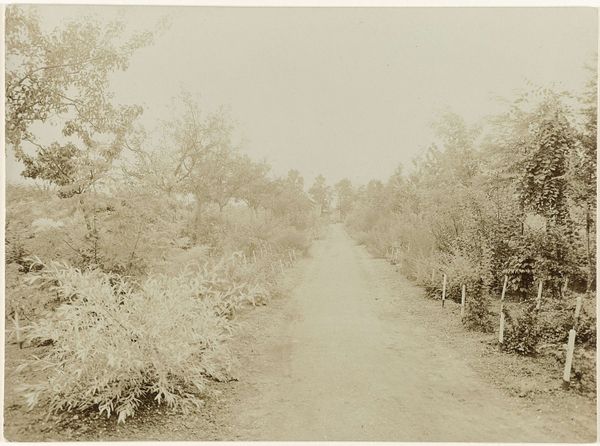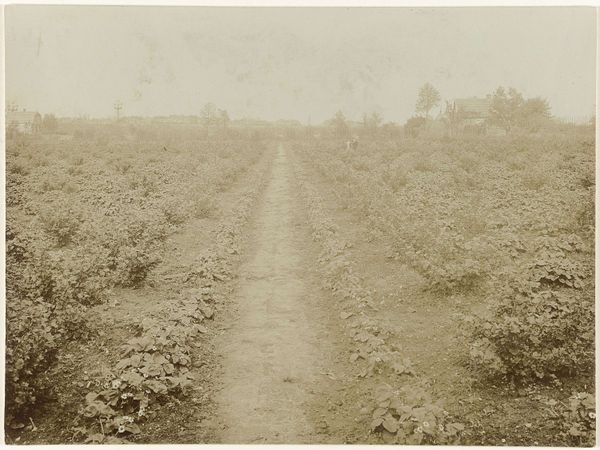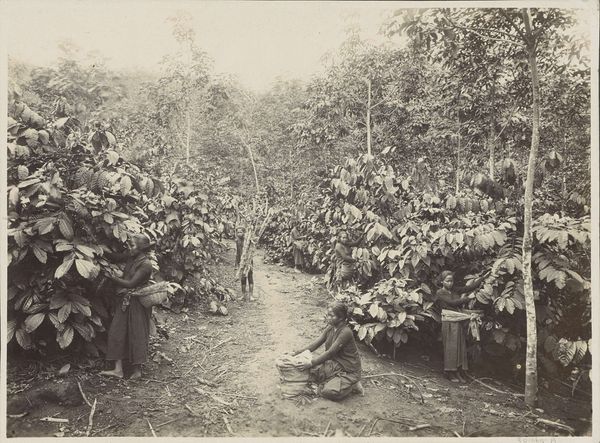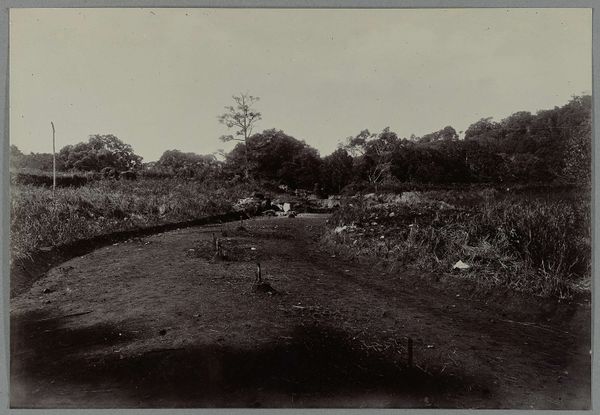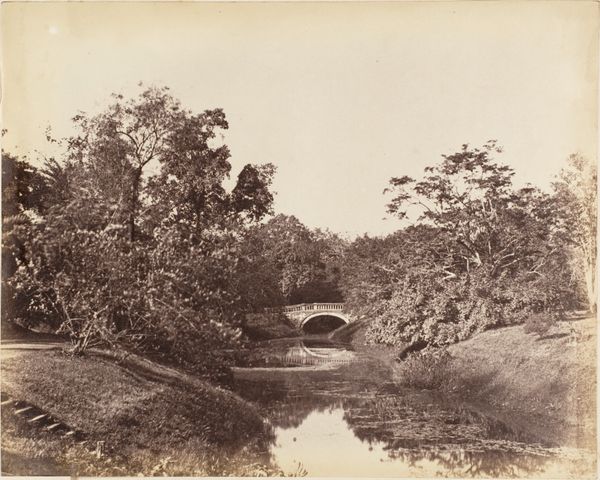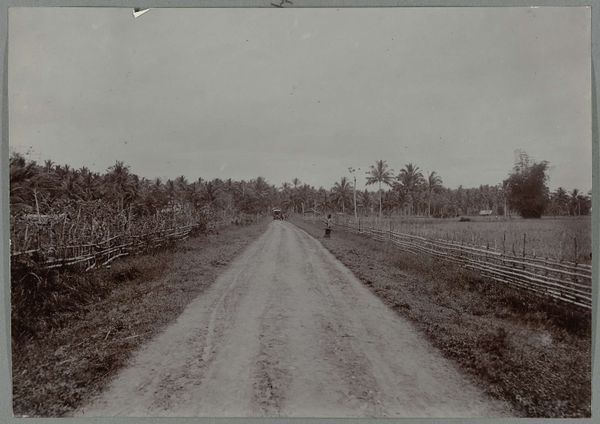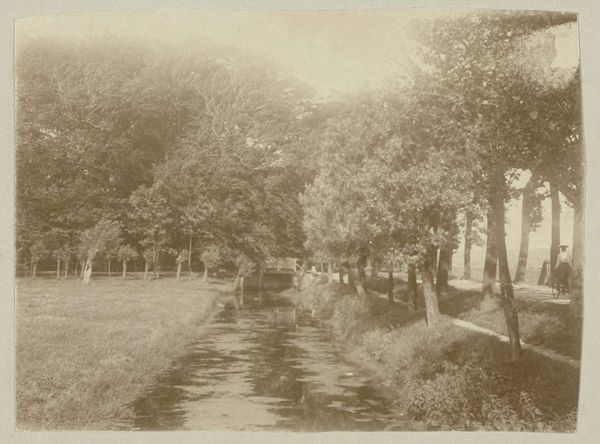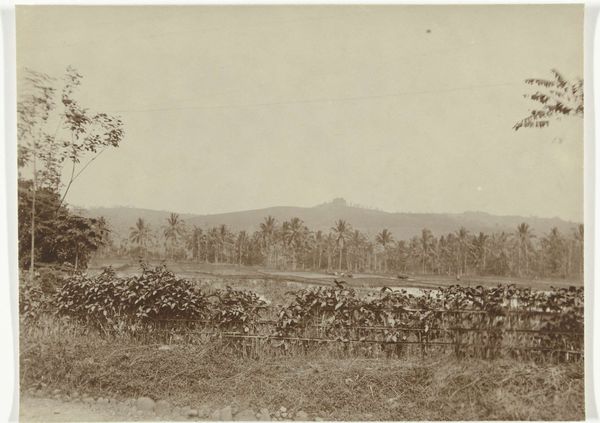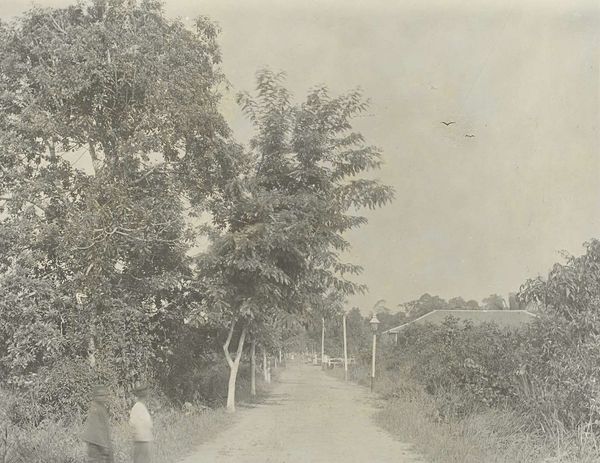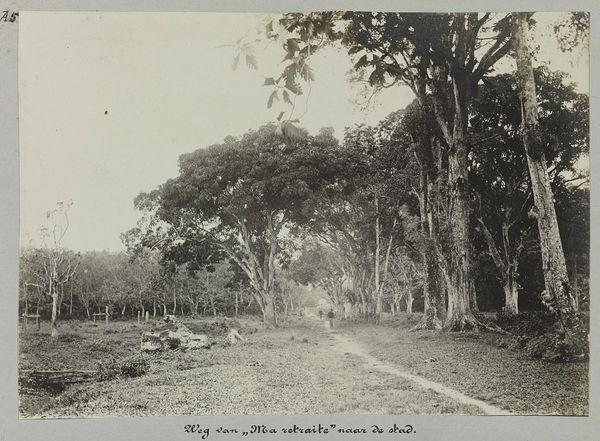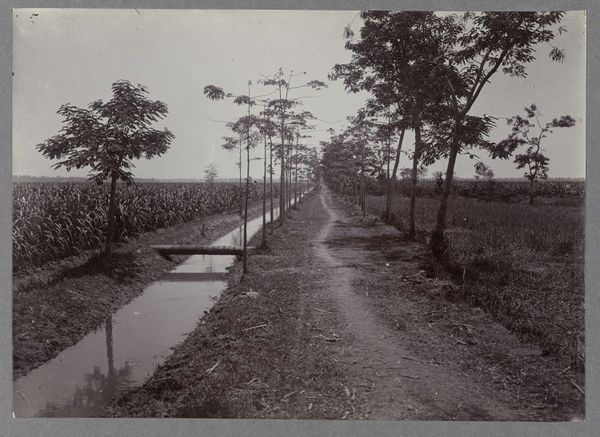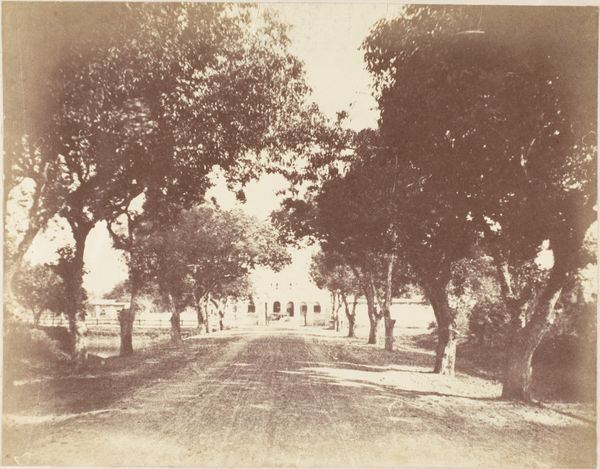
print, photography
#
pictorialism
# print
#
landscape
#
nature
#
photography
#
outdoor scenery
#
realism
Dimensions: height 120 mm, width 136 mm
Copyright: Rijks Museum: Open Domain
Curator: What a striking photograph! This is "Plantage Johanna-Catharina" captured sometime between 1918 and 1932 by Theodoor Brouwers. It's currently held in the Rijksmuseum collection. Editor: It has a very quiet, still feel to it. The muted tones give it a sort of sepia quality, even though it looks like a gelatin silver print. The eye is immediately drawn down that central waterway, disappearing into the trees. Curator: The use of pictorialism lends itself to that feeling. It's interesting how Brouwers, who clearly uses realism to depict the plantation landscape, imbues it with a stylistic softness often used for portraits, domestic scenes. Do you think the technique subverts our expectations here? Editor: I do. Water is essential. Beyond its physical function, this body of water suggests fertility, passage, the continuity of life within the plantation. The worker in the scene becomes another symbol, nearly swallowed up by the scale. His hat feels symbolic too, maybe speaking of status or occupation. Curator: Yes, the single figure underscores the complex relationship between humans and nature. It hints at the economic structures and the exploitative labor practices tied to plantations. The photograph captures both a serene landscape and an agricultural industry that participated in colonialism and deeply impacted individuals, specifically ethnic minorities. Editor: You’re right to place this within its broader historical context. There's a psychological tension here, this beauty offset by a certain alienation or sadness—an undercurrent suggesting the human cost hidden beneath the surface of this idyllic scene. Curator: Precisely, recognizing that tension requires a critical look at these kinds of images that depict plantations, beyond just celebrating the aesthetic qualities, or the skill required to create it. Editor: Considering all this adds so much more depth and brings it back to this single individual barely visible, yet somehow looming above the composition. I don’t think I will view plantations similarly from now. Curator: Hopefully we offered fresh eyes with which to appreciate the layers present within it.
Comments
No comments
Be the first to comment and join the conversation on the ultimate creative platform.
